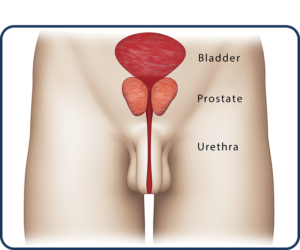men's Health
At PIIT, we are committed to empowering men’s wellbeing through innovative interventional radiology procedures. Our expert team specializes in delivering minimally invasive treatments tailored to address a diverse range of men’s health issues, from prostate health to vascular conditions. With a focus on patient-centered care, we strive to provide effective solutions that enhance your quality of life.
Prostate Artery Embolization (P.A.E.)
What Is PAE?
Prostate Artery Embolization is performed to relieve the urinary symptoms caused by enlarged prostate. This treatment slows the blood flow to the prostate.
Why Is This Procedure Recommended?
As the prostate gets enlarged, it may constrict or partly block the urethra, causing lower urinary tract symptoms such as:
For some patients these symptoms interfere with their quality of life.
- Urinary incontinence, which can range from some leaking to complete loss of bladder control.
- Irritative voiding symptoms.
- Increased urinary frequency, urgency, and pain while passing urine.
For some patients these symptoms interfere with their quality of life.

How Is This Procedure Performed?
- The procedure begins with the doctor prepping your groin or neck area with Iodine soap and administer local anesthesia so you don’t feel pain. This may sting briefly before going numb.
- The PAE is done through a small tube that the doctor inserts into the artery in your groin or your wrist.
- Patients often feel pressure at the groin or wrist site when the doctor inserts the tube into the artery.
- The doctor will thread the tube up into the artery that supplies the prostate gland.
- X-ray images or pictures are taken by a special X-ray machine after injecting X-ray contrast sometimes referred to as ‘dye’. This is known as angiography.
- When the tube is in the right place, the doctor will slowly inject small particles until the blood flow to the prostate is almost stopped. Then, the doctor will remove the tube.
- The doctor will put pressure on your groin or wrist area for 15 minutes to prevent bleeding.
- The entire procedure may take 2-3 hours.
What Are The Benefits VS Risks?
We have listed down a few benefits and risks below for better understanding
Benefits
- It is a minimally invasive procedure.
- Patient can expect a much quicker and comfortable recovery alongside their improved symptoms.
- Lower risk of urinary incontinence.
- Less pain and discomfort during and after the procedure.
- No sexual side effects.
Risks
The doctors will mitigate these risks as much as possible during the procedure.
- Damage to the blood vessel.
- Contrast x-ray dye allergy.
- Worsened kidney function.
- Infection.
- Urinary retention
- Bleeding from the artery entry site.

